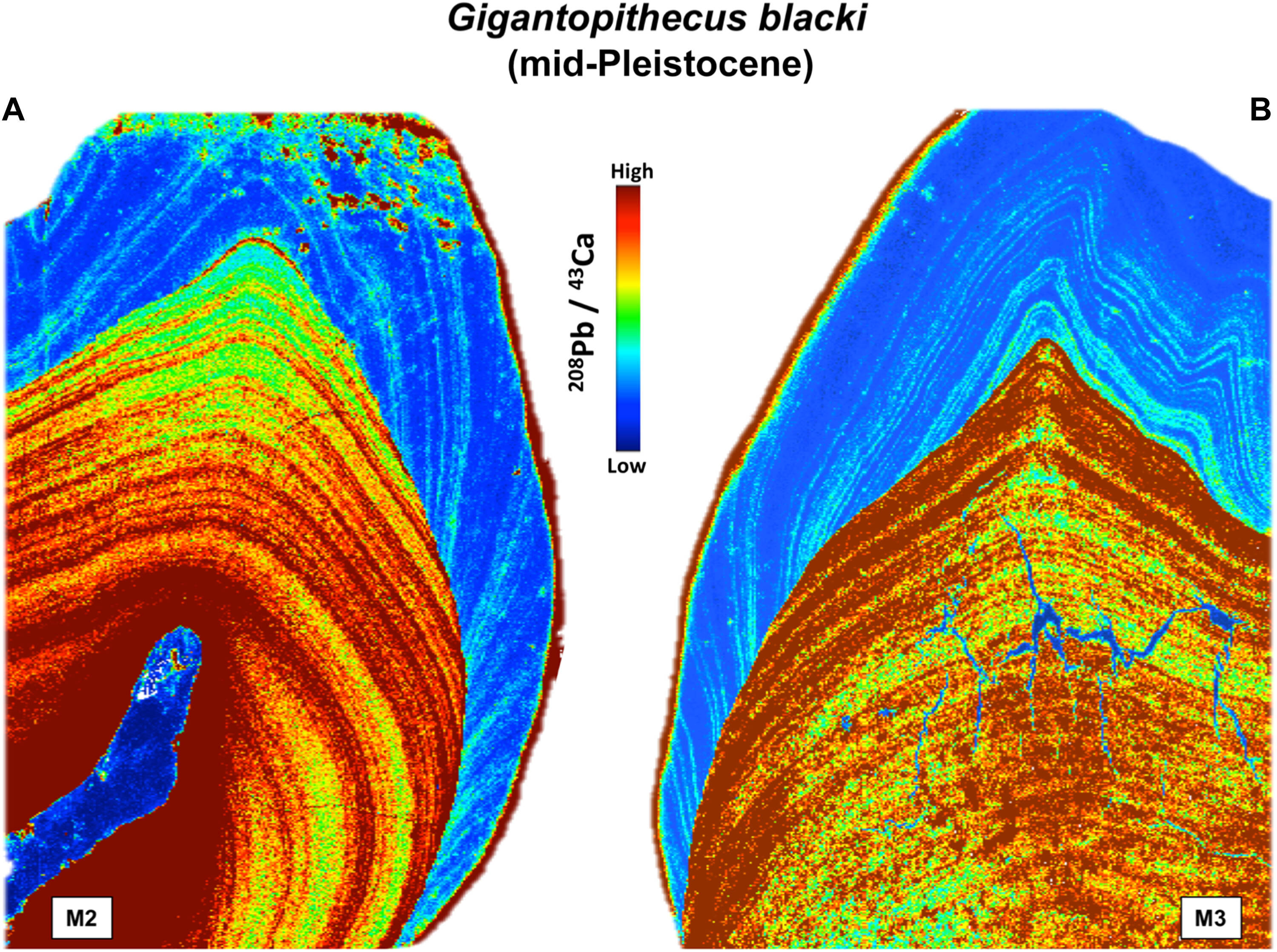
Impact of intermittent lead exposure on hominid brain evolution
Abstract
Gene-environmental interactions shape the evolution of brain architecture and function. Neuro-oncological ventral antigen 1 (NOVA1) is one gene that distinguishes modern humans from extinct hominids. However, the evolutionary pressures that selected the modern NOVA1 allele remain elusive. Here, we show using fossil teeth that several hominids (Australopithecus africanus, Paranthropus robustus, early Homo sp., Gigantopithecus blacki, Pongo sp., Homo neanderthalensis, and Homo sapiens) were consistently exposed to lead over 2 million years, contradicting the idea that lead exposure is solely a modern phenomenon. Moreover, lead exposure on human brain organoids carrying the archaic NOVA1 variant disrupts FOXP2 expression in cortical and thalamic organoids, a gene crucial for the development of human speech and language abilities. Overall, the fossil, cellular, and molecular data support that lead exposure may have contributed to the impact of social and behavioral functioning during evolution, likely affording modern humans a survival advantage.
https://doi.org/10.1126/sciadv.adr1524
[사이언스샷] 납 중독이 네안데르탈인 멸종 불렀다…언어능력 발달 막아
네안데르탈인은 40만년 전 아프리카를 떠나 유라시아에 정착했다. 약 4만년 전 멸종하기까지 인류의 직계 조상인 호모 사피엔스와 수만년 공존했다. 같은 호모속(屬) 인류인데 왜 한쪽은 멸종하
v.daum.net
'고고학 뉴스' 카테고리의 다른 글
| 5000년 전 中 신석기 시대...'사람 두개골'로 바가지 만들었다 (0) | 2025.10.18 |
|---|---|
| "스페인 동굴서 5천600년 전 신석기 집단 식인행위 증거 발견" (0) | 2025.08.08 |
| 4만년 전 멸종된 네안데르탈인, 자외선 차단제 썼다면 살았다? (0) | 2025.08.07 |
| 뇌 효소 유전자, 네안데르탈인과 현생인류 운명 갈랐다 (0) | 2025.08.06 |
| 구석기시대 동아시아 항해 : 통나무배 이론에 대한 실험고고학(실험적 테스트) (0) | 2025.06.27 |




